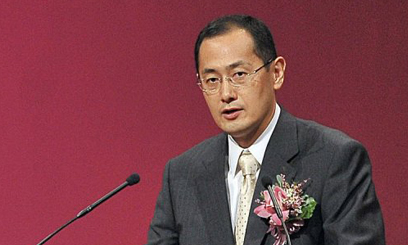
Shinya Yamanaka of Japan and John Gurdon of Britain have won the Nobel Prize for work in cell programming/AFP
The two scientists were lauded for determining that adult cells can be transformed back to an infant, versatile state called stem cells.
“Their findings have revolutionised our understanding of how cells and organisms develop,” the Nobel jury declared.
Gurdon told Swedish Radio he was surprised by the honour, since his award-winning research was done more than 40 years ago.
“I’m amazed and immensely grateful and astonished that they should recognise work done such a long time ago,” he said.
“Of course I’m extremely grateful to be recognised with Shinya Yamanaka who’s done this wonderful work.”
By reprogramming human cells, “scientists have created new opportunities to study diseases and develop methods for diagnosis and therapy,” the Nobel committee said.
Stem cells are precursor cells which differentiate into the various organs of the body.
They have stirred huge excitement, with hopes that they can be coaxed into growing into replacement tissue for victims of Alzheimer’s, Parkinson’s and other diseases.
Gurdon’s achievement in 1962 was to discover that the DNA code in the nucleus of an adult frog cell held all the information to develop into every kind of cell.
This meant that an adult cell could in essence be reprogrammed.
His landmark discovery was initially met with scepticism, as the journey from immature to specialised cell was previously deemed irreversible.
“The discoveries of Gurdon and Yamanaka have shown that specialised cells can turn back the developmental clock under certain circumstances,” the committee said.
But his theory became accepted when it was confirmed by other scientists.
More than four decades later, in 2006, Yamanaka discovered how mature cells in mice could in fact be turned back to their youthful state.
The advantage of this would be to avert the need to use stem cells taken from early-stage embryos. These are hugely versatile but have stirred ethical controversy.
Stem-cell research is still at a very early stage, and only a tiny number of human trials have taken place.
“The discoveries of Gurdon and Yamanaka have shown that specialised cells can turn back the developmental clock under certain circumstances,” the committee said.
“For instance, skin cells can be obtained from patients with various diseases, reprogrammed, and examined in the laboratory to determine how they differ from cells of healthy individuals,” it said.
The Swedish media had in recent days broadly tipped the pair to take home the honour.
Gurdon, born in 1933, is currently at the Gurdon Institute in Cambridge, while Yamanaka, 50, is a professor at Kyoto University in Japan.
Because of the economic crisis, the Nobel Foundation has slashed the prize sum to eight million Swedish kronor ($1.2 million, 930,000 euros) per award, down from the 10 million kronor awarded since 2001.
Last year, the medicine honour went to Bruce Beutler of the United States, Jules Hoffmann of France and Ralph Steinman of Canada, for their groundbreaking work on the immune system.
The medicine prize opened the 2012 Nobel Prize season, with a week of announcements and speculation over who will collect the literature and peace prizes.
This year’s laureates will receive their prizes at a ceremony in Stockholm on December 10, the anniversary of prize founder Alfred Nobel’s death in 1896.














































